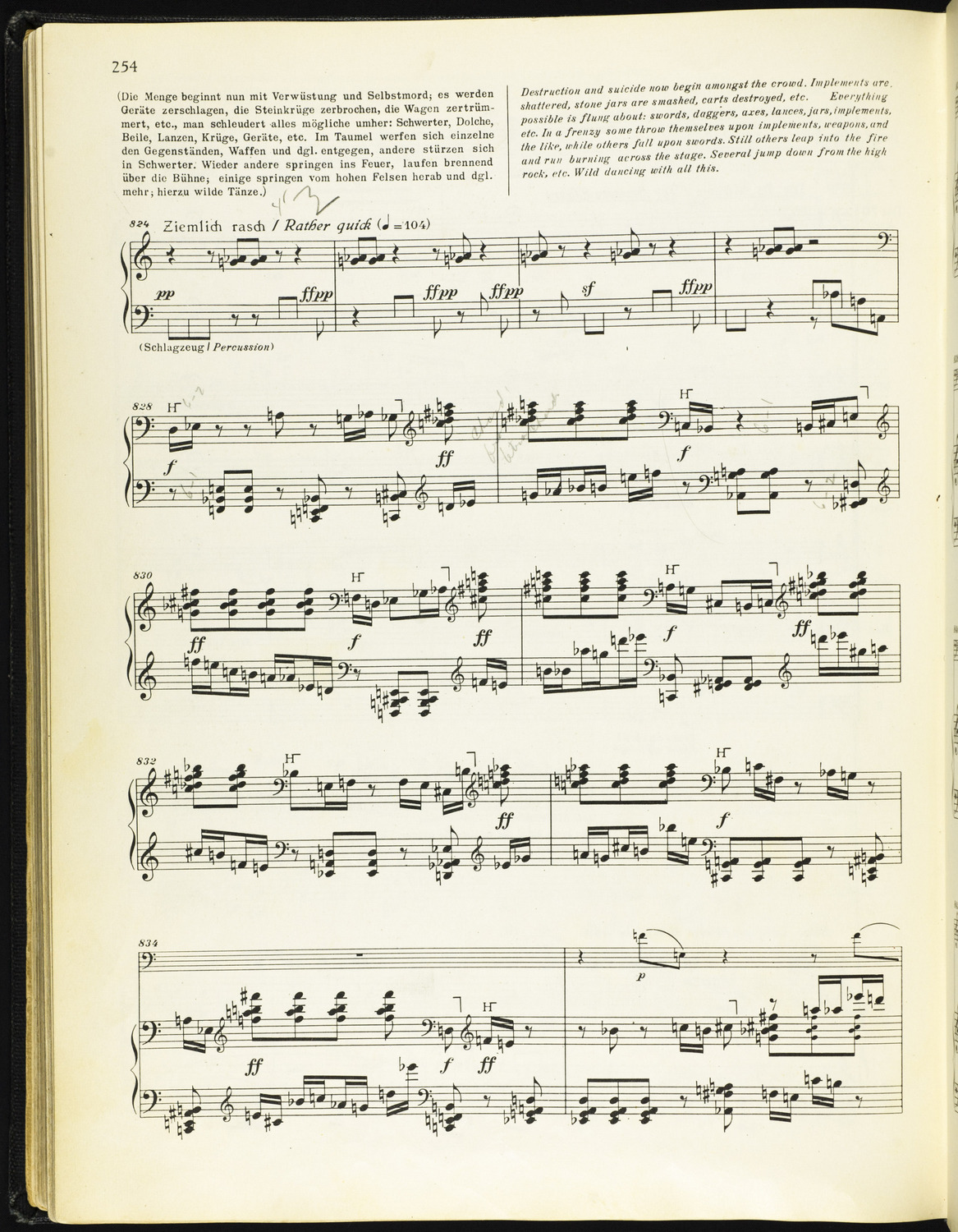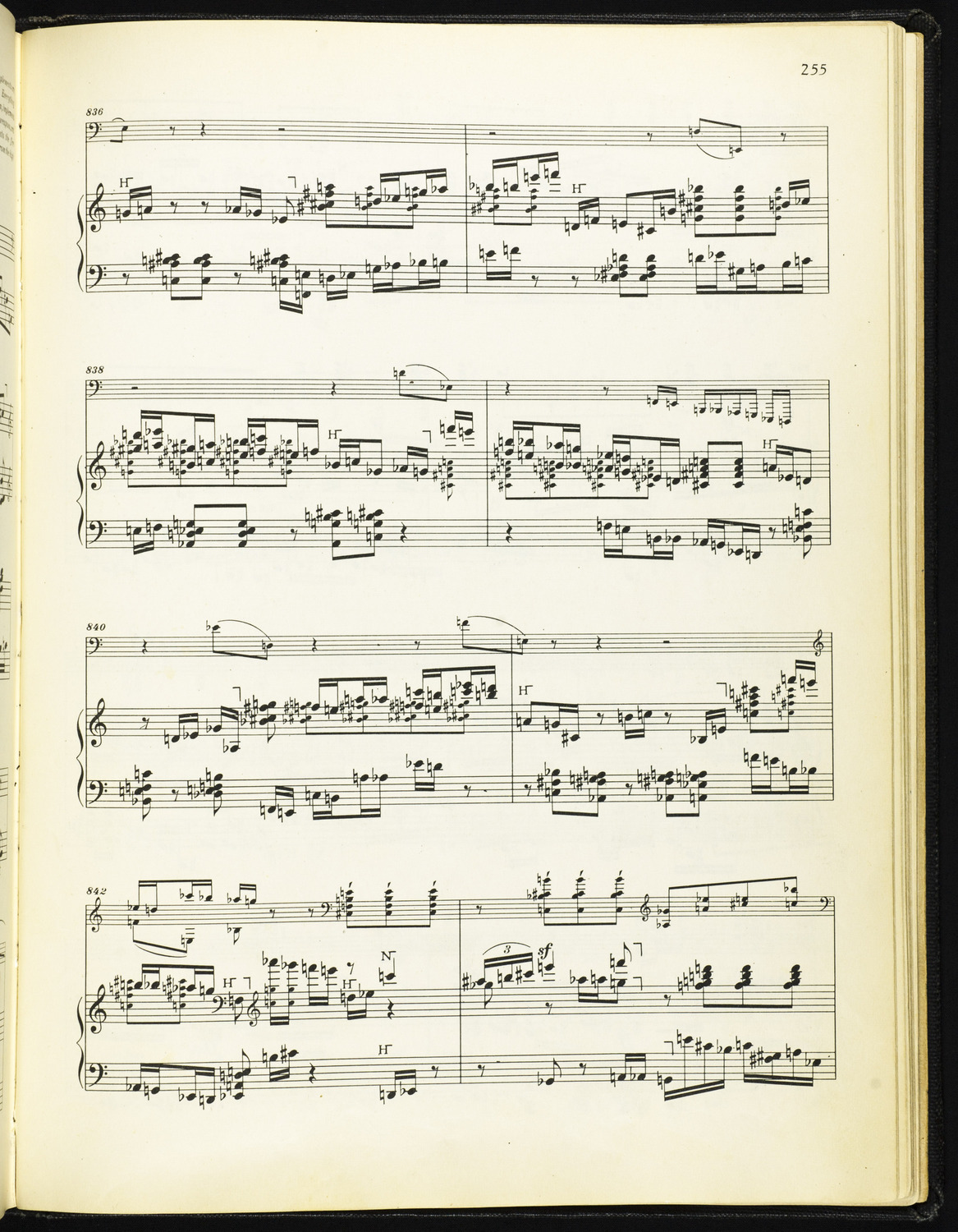Arnold Schoenberg—Moses und Aron

Arnold Schoenberg. Moses und Aron. Mainz: B. Schott’s Sohne, 1957. pp. 254-255.
© by Gertrud Schoenberg 1957. Copyright renewed 1977 by Schott Music International.

Music Library M1503.S37 M9 1957
Moses und Aron deals with much of the same material as Haydn’s Israel in Egypt. The first act of Schoenberg’s opera focuses on Moses at the burning bush and the miracles described in the early chapters of Exodus. The second act deals with the worship of the golden calf found in Exodus 32. Schoenberg never composed music for the intended third act. The opera premiered in 1957 in Zurich, after the composer’s death.
Schoenberg’s libretto presents an abstract look at the Exodus story. While Haydn relates the narrative in a straightforward manner, Schoenberg uses it to frame an opposition between two possible ways to view God, embodied in the viewpoints of Moses and Aaron. Moses believes in God as a pure idea, while Aaron is more interested in something visible and tangible. This disagreement culminates in the second act, when Moses is up on Mt. Sinai receiving the law from God. When the Israelites begin to feel uneasy about Moses’s absence, Aaron pacifies them by allowing a golden calf to be built. The score on exhibit shows a segment of Scene 3 from Act 2, where the people build and worship the idol.
Schoenberg’s opera is atonal, using twelve-tone serialism as a unifying device throughout the work. This technique calls for the organization of all twelve pitches of the chromatic scale in an order of the composer’s choosing. Moses und Aron is based on a single row, or order of pitches. Schoenberg calls for differing styles of singing to help present the opposition between Moses and Aaron. For example, Moses often uses the speech-singing hybrid of Sprechstimme while Aaron’s text is sung fully and expressively.
For it being a work concerned with abstract ideals, practical staging considerations in Moses und Aron present a tremendous difficulty. The scope of Schoenberg’s stage directions in the score make them impossible to perform literally. The pages to the right show this. During the drunken idol worship, he calls for many objects to be broken and people to set themselves on fire, among other extreme actions. The sample here is from the Cook Music Library’s 1957 vocal score, an early edition of the work.
